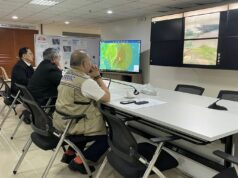Philippine COVID surge outside capital, says OCTA

By Kyle Aristophere T. Atienza, Reporter
CORONAVIRUS infections in the Philippines are not about to peak “any time soon” because the surge was now being felt in regions outside Metro Manila, according to researchers from the country’s premier university.
“The surge is no longer just in the National Capital Region Plus,” Fredegusto P. David, a fellow from the OCTA Research Group of the University of the Philippines, told ABS-CBN TeleRadyo on Sunday in mixed English and Filipino. “It’s now all over the Philippines. It would not peak in the entire country even if we say that cases have peaked in the region.”
He said the daily growth rate in Metro Manila dropped to 2% on Jan. 15 from 3% a day earlier. He said it was possible that the region had reached its peak and infections were decreasing. But it could also mean that testing volume was insufficient.
“The trend of new cases in the National Capital Region (NCR) is close to peak, or new cases in NCR are limited by testing capacity,” he said in a report posted on Twitter.
Mr. David said if cases in the capital region start falling this week, the drop in the growth rate was probably caused by the peak.
“In the second case, we will see the number of new cases continue to hover around the same level, until the downward trend happens.”
The government should continue to improve access to coronavirus tests to encourage Filipinos to get tested, said Joey Francis Hernandez, treasurer of the Philippine Society of Public Health Physicians.
“Restrictions on mobility and opportunities for crowding might be warranted considering the surge in cases,” he said in a Facebook Messenger chat. “However, these are short-term and won’t hold. The call for streamlined contact-tracing is still there.”
The Philippines posted 37,154 coronavirus infections on Sunday, bringing the total to 3.21 million.
The death toll increased by 50 to 52,907, while recoveries rose by 30,037 to 2.86 million, the Department of Health (DoH) said in a bulletin.
It said 47.4% of 81,381 samples on Jan. 14 tested positive for the coronavirus, way above the 5% threshold set by the World Health Organization (WHO).
There were 287,856 active cases, 9,212 of which did not show symptoms, 273,924 were mild, 2,940 were moderate, 1,475 were severe and 305 were critical.
DoH said 98% of the latest cases occurred from Jan. 3 to Jan. 16. The top regions with new cases in the past two weeks were Metro Manila with 15,591, Calabarzon with 8,384 and Central Luzon with 3,232 infections.
It added that 60% of deaths occurred in January, 2% each in November and October and 24% in September.
The agency said 137 duplicates had been removed from the tally, 85 of which were reclassified as recoveries and one was tagged as a death. Twenty-seven recoveries were relisted as deaths. Twelve laboratories failed to submit data on Jan. 14.
The Health department said 49% of intensive care unit beds in the country had been used, while the rate for Metro Manila was 57%.
The government has banned unvaccinated people from using public transportation in Metro Manila. Critics including the Commission on Human Rights have said the ban violates basic human rights.
“We are still experiencing spikes, and these will still happen in the future if we do not halt opportunities for disease transmission,” Mr. Hernandez said.
He said the government should improve the welfare of health workers, noting that some hospitals were on an “emergency hiring.”
“Proper compensation and nonmonetary incentives should be in place to attract healthcare workers and ensure they are treated fairly,” he said. “There should also be support for those employed in the private sector, as well as engagement of employers to give what is due them.”
“There might be little opportunity to mitigate these longstanding issues now, but definitely we can start doing the right thing now,” he added.



